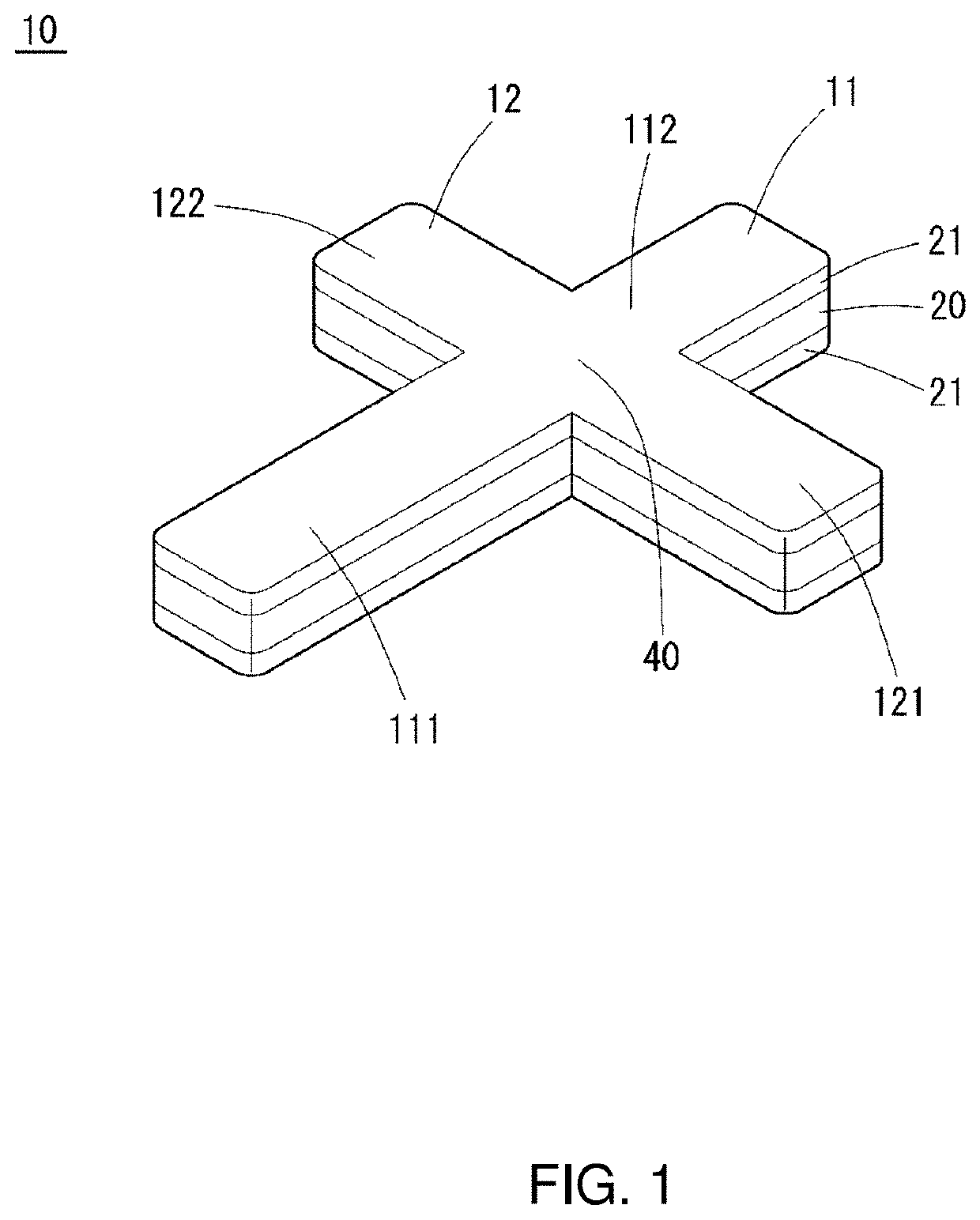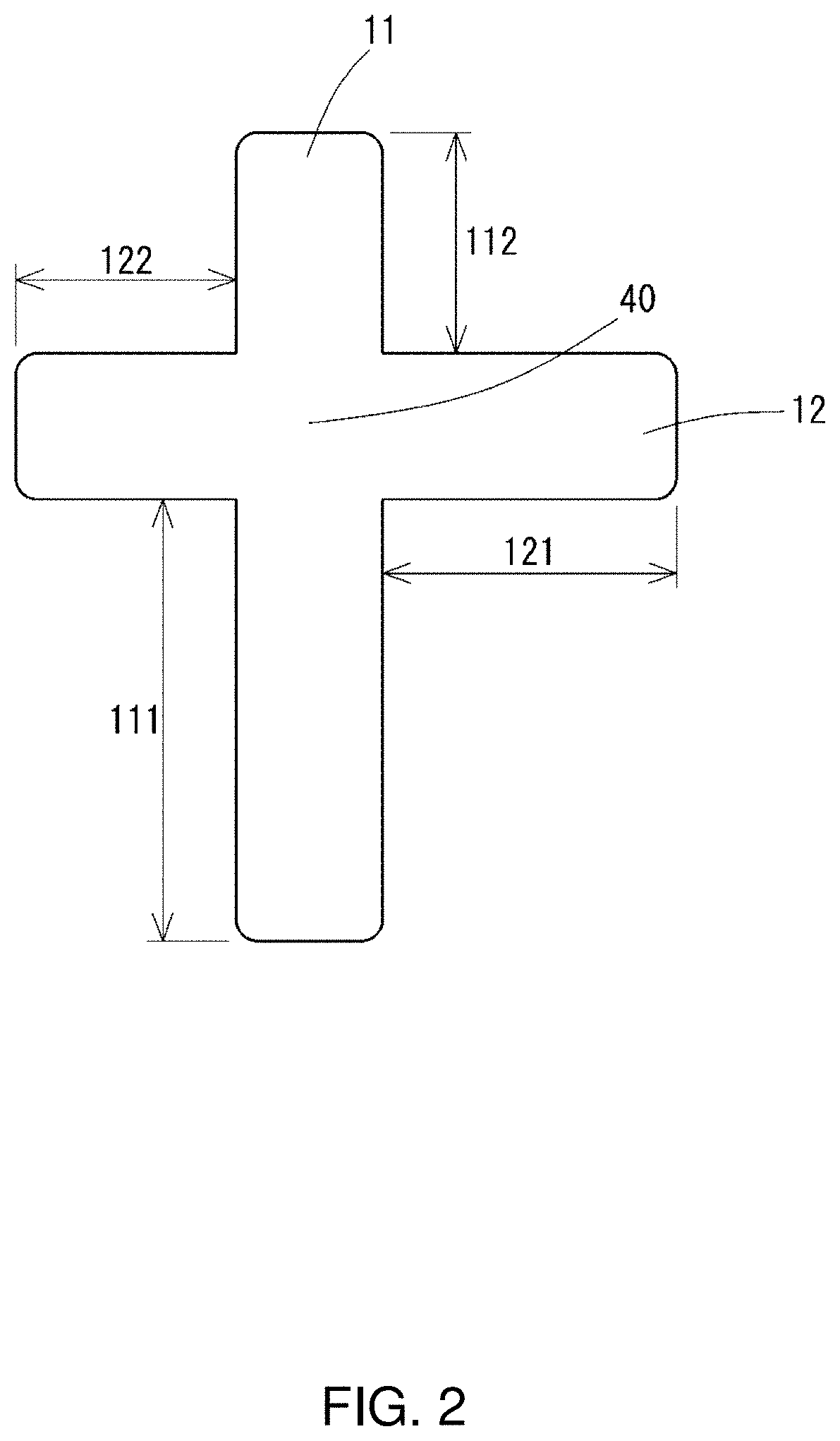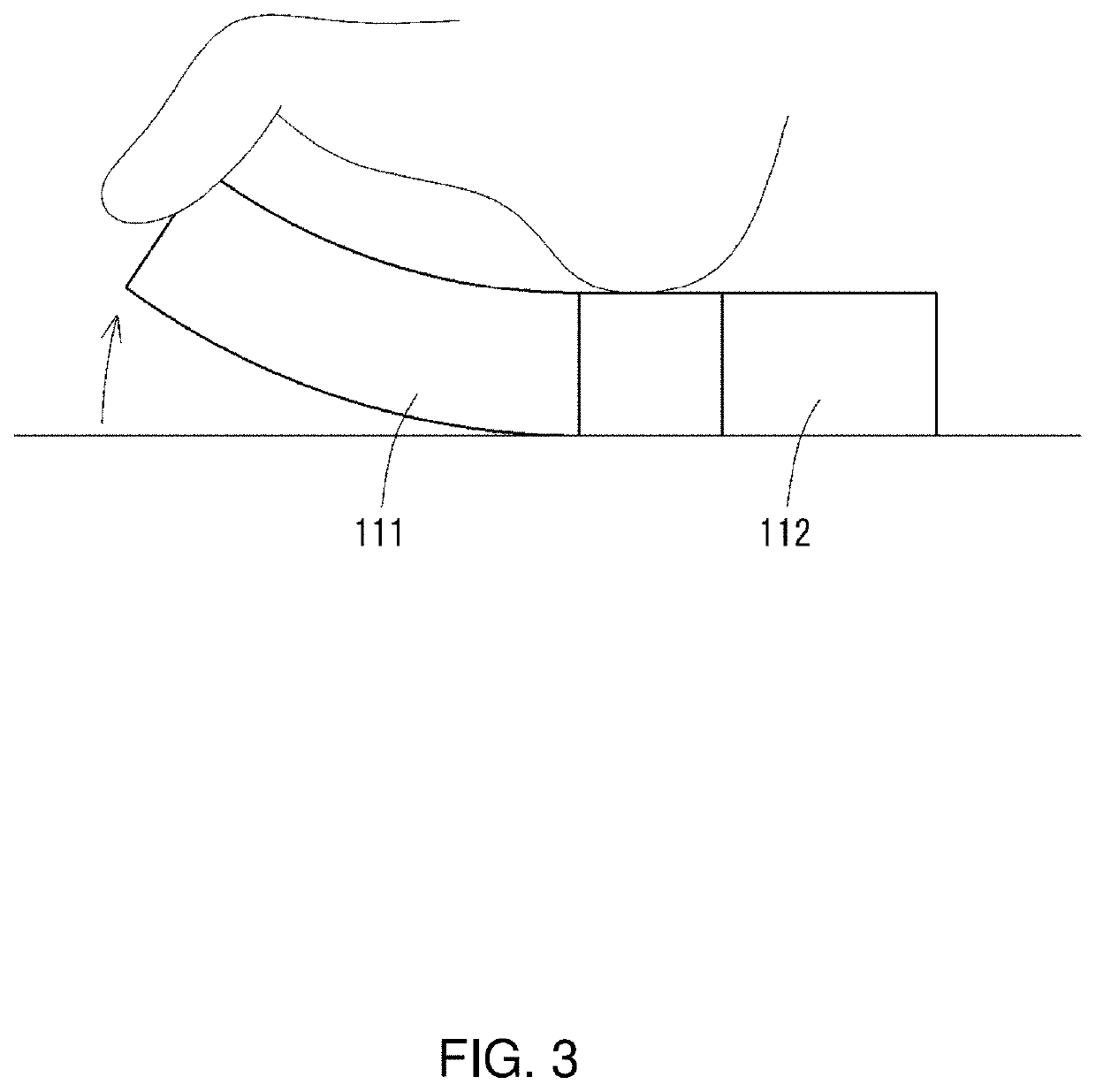Foot training device and foot training method
a training device and foot technology, applied in the field of foot training devices and foot training methods, can solve the problems of complex structure of the device disclosed in patent literature 2, inability to replace the elastic member of the training device, and difficulty in changing so as to achieve different degrees of elasticity in the flexure, easy to change the magnitude of the load, and simple structure
- Summary
- Abstract
- Description
- Claims
- Application Information
AI Technical Summary
Benefits of technology
Problems solved by technology
Method used
Image
Examples
Embodiment Construction
[0032]Structure of Foot Training Device
[0033]A foot training device according to an embodiment of the present invention will be described in detail with reference to the drawings. FIG. 1 is a perspective view showing the external appearance of a foot training device according to an embodiment of the present invention, and FIG. 2 is a top view of the foot training device. The foot training device (hereinafter also referred to simply as the “training device”) according to the present embodiment is used for the purpose of training a foot.
[0034]A training device 10 includes an elastic body layer 20 formed of elastic members that are bendable in a bending direction, the elastic body layer being shaped to have projections with different lengths, namely, a first projection 111, a second projection 112, a third projection 121, and a fourth projection 122, that project in cross directions in the same plane from a fulcrum 40 at the center. The first projection 111 and the second projection 11...
PUM
 Login to View More
Login to View More Abstract
Description
Claims
Application Information
 Login to View More
Login to View More - R&D
- Intellectual Property
- Life Sciences
- Materials
- Tech Scout
- Unparalleled Data Quality
- Higher Quality Content
- 60% Fewer Hallucinations
Browse by: Latest US Patents, China's latest patents, Technical Efficacy Thesaurus, Application Domain, Technology Topic, Popular Technical Reports.
© 2025 PatSnap. All rights reserved.Legal|Privacy policy|Modern Slavery Act Transparency Statement|Sitemap|About US| Contact US: help@patsnap.com



